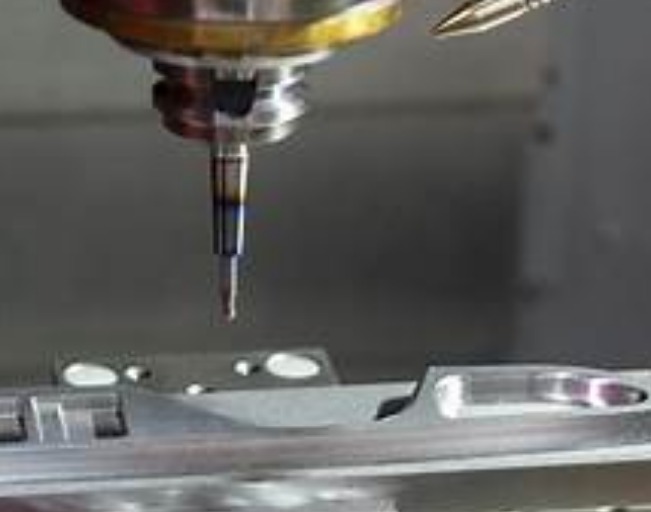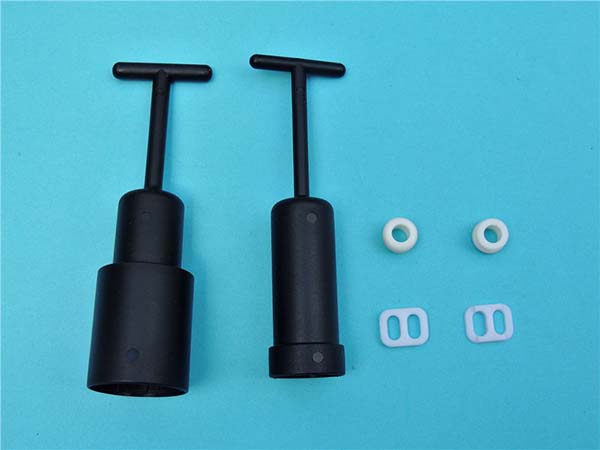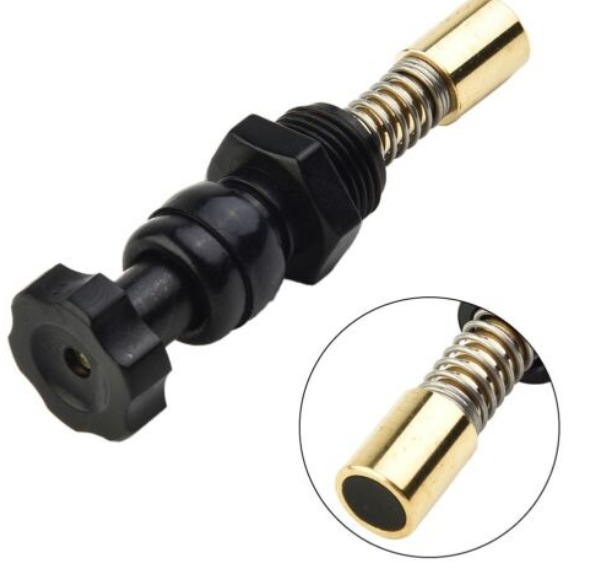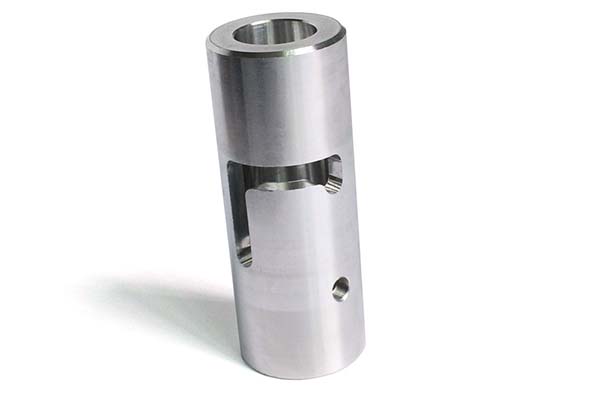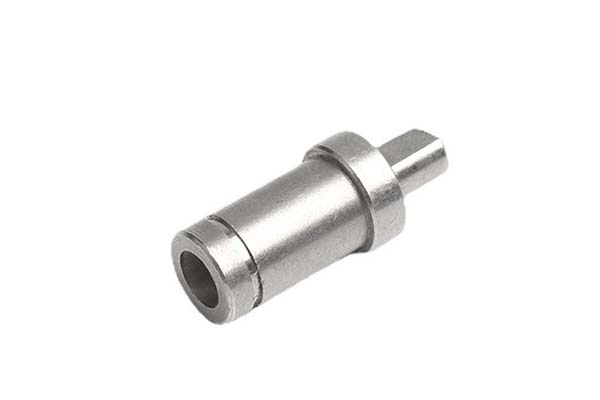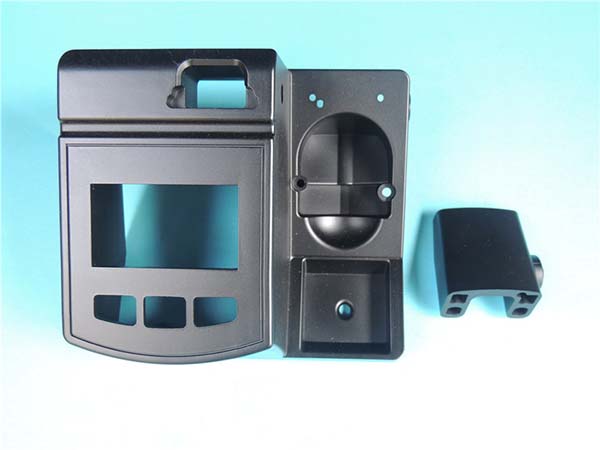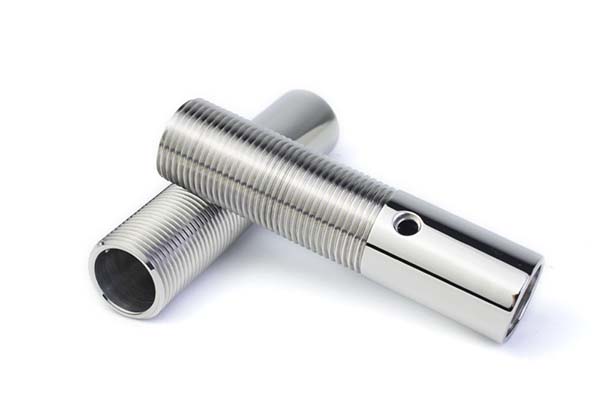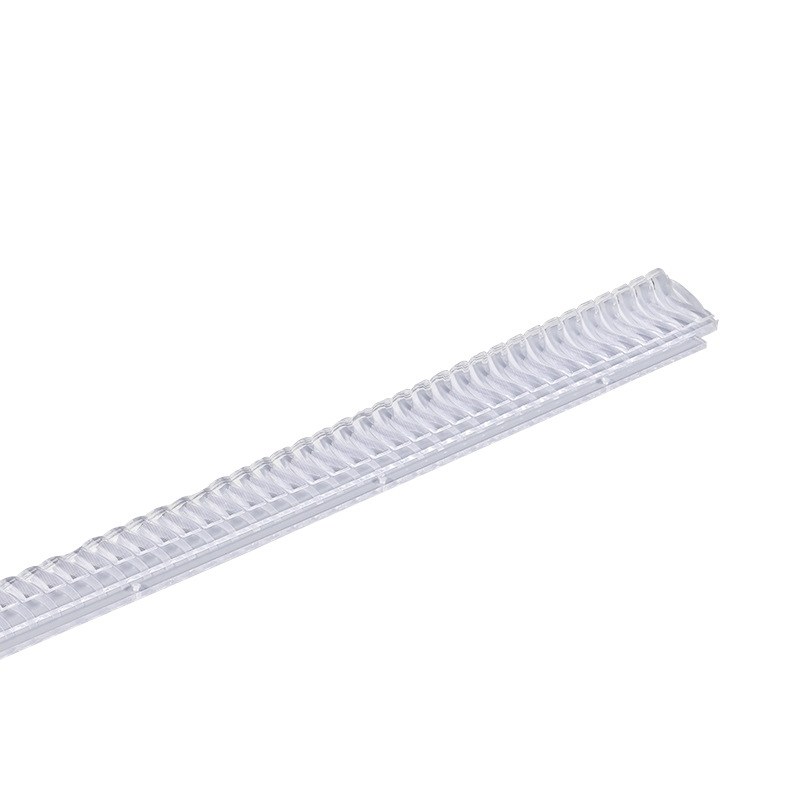1. Introduction
The aerospace industry stands as a paragon of human ingenuity and technological advancement, constantly pushing the boundaries of what is possible. At the heart of this remarkable industry lies an unwavering reliance on precision machining parts. These components are the unsung heroes, playing a pivotal role in ensuring the safety, efficiency, and overall functionality of aircraft and spacecraft.
Precision machining parts in aerospace are not just ordinary components; they are engineered to the most exacting standards. The tolerance levels required in this field are often measured in micrometers or even nanometers, a testament to the precision demanded. For instance, in a jet engine, the turbine blades must be manufactured with such precision that any deviation could lead to catastrophic consequences. A small error in the shape or size of these blades could disrupt the engine's performance, causing vibrations, reduced efficiency, or even engine failure during flight.
The materials used in aerospace precision machining are equally extraordinary. High - strength alloys such as titanium and nickel - based superalloys, as well as advanced composites, are commonly employed. These materials are chosen for their ability to withstand extreme conditions, including high temperatures, intense pressures, and corrosive environments. For example, in the re - entry phase of a spacecraft, the heat - shield components made from carbon - carbon composites need to endure temperatures of up to 3000°F (1650°C) while maintaining their structural integrity.
In the following sections, we will delve deeper into the specific applications of precision machining parts in different aerospace systems, explore the advanced manufacturing techniques used to produce them, and discuss the future trends that will continue to shape this critical field.
2. The Crucial Role in Aerospace
2.1 Ensuring Flight Safety
Precision machining parts play an indispensable role in ensuring flight safety. In aircraft engines, for example, the turbine blades, which are precision - machined, are critical components. They must operate under extremely high rotational speeds, reaching up to tens of thousands of revolutions per minute. A single flaw or deviation in the machining of these blades can lead to unbalanced rotation, generating excessive vibrations. These vibrations can not only cause premature wear of engine components but also, in extreme cases, result in blade failure and engine disintegration during flight, endangering the lives of all on board.
The landing gear components, such as the wheel axles and struts, are also precision - machined. They need to withstand the massive impact forces during landing, which can be several times the weight of the aircraft. Precise machining ensures that these components have the correct shape, size, and material properties to handle these forces without failure. For instance, a properly machined wheel axle can evenly distribute the load during landing, preventing axle breakage and ensuring a smooth touchdown.
In the flight control system, precision - machined parts like the control rods and actuators are essential. They transmit the pilot's commands accurately to the control surfaces, such as the ailerons, rudders, and elevators. Any inaccuracy in these parts can lead to imprecise control responses, making it difficult for the pilot to maintain the aircraft's stability and trajectory.
2.2 Meeting Stringent Performance Requirements
Aerospace applications demand components that can meet stringent performance requirements. One of the key requirements is lightweight construction. With the use of precision - machined parts made from advanced materials like aluminum alloys and composites, aircraft can reduce their overall weight significantly. For example, replacing traditional metal components with carbon - fiber - reinforced composites in aircraft wings can lead to a weight reduction of up to 20 - 30%. This weight reduction directly improves fuel efficiency, as less energy is required to move the aircraft through the air. A lighter aircraft can also carry more payload or travel longer distances on the same amount of fuel.
High strength is another crucial requirement. Precision - machined parts made from titanium and nickel - based alloys can withstand high mechanical stresses. In the fuselage structure, parts made from these alloys need to endure the pressure differentials between the inside and outside of the aircraft during flight. For example, at cruising altitudes, the outside air pressure is much lower than the cabin pressure, and the fuselage components must be strong enough to prevent structural failure.
Temperature resistance is also vital. In aircraft engines, components like the combustion chamber liners need to withstand temperatures exceeding 1000°C. Precision - machined parts made from nickel - based superalloys are designed to maintain their mechanical properties at these high temperatures, ensuring the engine's efficient operation. Additionally, parts in the aircraft's environmental control system need to function properly in a wide range of temperatures, from the extremely cold temperatures at high altitudes to the warmer temperatures on the ground.
Corrosion resistance is essential, especially for aircraft operating in marine or humid environments. Precision - machined parts made from corrosion - resistant materials, such as certain aluminum alloys with protective coatings, can prevent the degradation of components over time. This ensures the long - term reliability and safety of the aircraft, reducing the need for frequent maintenance and replacement of parts.
2.3 Enabling Complex Aerospace Designs
Precision machining techniques enable the creation of complex aerospace designs. Take the aircraft wing, for example. The wing's shape is carefully designed to optimize lift and reduce drag. Precision - machined parts allow for the creation of the complex airfoil shape, which is crucial for the wing's aerodynamic performance. The internal structure of the wing, which consists of spars, ribs, and stringers, is also made up of precision - machined components. These components are designed to fit together precisely, providing the necessary structural support while minimizing weight.
In the design of the aircraft fuselage, precision - machined parts are used to create complex curves and shapes. The fuselage needs to be aerodynamically efficient while also providing enough space for passengers, cargo, and equipment. Precision machining allows for the integration of various systems, such as the electrical, hydraulic, and avionics systems, into the fuselage structure. For example, the mounting brackets for avionics equipment are precision - machined to ensure a perfect fit and proper alignment, which is essential for the equipment's optimal performance.
In spacecraft, precision - machined parts are used to create complex geometries for antennas, solar panels, and heat - shield components. The antennas need to have a precise shape and surface finish to ensure efficient signal transmission and reception. The solar panels are made up of precision - machined cells and frames, which are designed to be lightweight yet strong enough to withstand the harsh space environment. The heat - shield components, as mentioned earlier, require extremely precise machining to ensure they can protect the spacecraft during re - entry into the Earth's atmosphere.
3. Precision Machining Technologies in Aerospace
3.1 CNC Machining
CNC (Computer Numerical Control) machining is a fundamental technology in aerospace precision manufacturing. It operates on the principle of using pre - programmed computer software to control the movement of machine tools, such as mills, lathes, and grinders.
The advantages of CNC machining are manifold. Firstly, it offers extremely high precision. In aerospace applications, components often require tolerances in the range of ±0.01 mm or even tighter. For example, the impellers in aircraft engines are CNC - machined with a precision that ensures the accurate flow of air and fuel mixture, optimizing engine performance. The high precision also contributes to better part - to - part consistency. Each component produced by CNC machining is virtually identical, reducing the need for extensive fitting and adjustment during assembly. This consistency is crucial for the mass - production of aerospace parts, as it ensures that all components meet the exacting standards required for flight safety and performance.
Secondly, CNC machining provides a high degree of automation. Once the program is set up, the machine can operate continuously for long periods, reducing the need for constant human intervention. This not only increases productivity but also minimizes the risk of human - error - induced defects. For instance, in the production of aircraft structural components, CNC - controlled milling machines can work around the clock, churning out high - quality parts with minimal supervision.
A real - world example of CNC machining in aerospace is the production of landing gear components. These parts need to be extremely strong and precise to withstand the impact of landing. CNC - machined landing gear struts are made with high - strength steel alloys, and the CNC process ensures that the internal bores for hydraulic cylinders and the external surfaces for attachment points are machined to the exact specifications. This precision guarantees proper functionality and safety during take - off and landing operations.
3.2 Electrical Discharge Machining (EDM)
Electrical Discharge Machining (EDM) is a non - traditional machining process that is highly valuable in aerospace manufacturing, especially for complex - shaped parts and materials with high hardness. The principle of EDM is based on the phenomenon of electrical discharge. In EDM, a tool electrode (usually made of copper or graphite) and the workpiece are placed in a dielectric fluid (such as kerosene or de - ionized water). A series of high - voltage electrical pulses are applied between the electrode and the workpiece. When the voltage is high enough, a spark discharge occurs in the small gap between them. This spark generates an extremely high - temperature plasma channel, reaching temperatures of up to 10,000°C. The heat from the spark melts and vaporizes a small amount of the workpiece material, which is then flushed away by the dielectric fluid.
EDM is particularly suitable for applications where traditional machining methods are ineffective. For example, when machining parts with intricate internal geometries, such as the cooling channels in turbine blades. These channels have complex shapes that are difficult to achieve through conventional drilling or milling. EDM can precisely erode the material to create these channels, ensuring efficient cooling of the turbine blades during operation. Another area where EDM excels is in processing high - hardness materials like titanium alloys and nickel - based superalloys. These materials are difficult to machine using traditional cutting tools due to their high strength and toughness, but EDM can effectively shape them without the need for excessive cutting force.
In the aerospace industry, EDM is commonly used in the production of engine components. For instance, the combustion chambers in jet engines are often made of nickel - based superalloys. EDM is used to create the precise internal shapes and holes required for fuel injection and combustion, ensuring optimal engine performance. Additionally, EDM is used for the repair of damaged aerospace components. By precisely removing the damaged material and then depositing new material through a reverse EDM process (electro - deposition), it is possible to restore the functionality of components such as turbine blades and engine casings.
3.3 Ultra - Precision Machining
Ultra - precision machining refers to a set of manufacturing processes that can achieve extremely high levels of dimensional accuracy and surface finish. The goal is to produce parts with tolerances in the sub - micrometer or even nanometer range, and surface roughness values in the nanometer scale.
Two common techniques in ultra - precision machining are single - point diamond turning and fly - cutting. Single - point diamond turning uses a diamond - tipped cutting tool to precisely remove material from the workpiece. The diamond tool is extremely sharp and hard, allowing for the creation of smooth, mirror - like surfaces. This technique is often used for machining optical components in aerospace, such as infrared lenses and mirrors for satellite - based optical systems. These components require a surface finish of less than 10 nanometers to ensure high - quality optical performance.
Fly - cutting, on the other hand, involves a high - speed rotating cutter that removes material in a controlled manner. It is particularly useful for machining large, flat surfaces with high precision. In aerospace, fly - cutting can be used to machine the surfaces of large satellite structures or the platforms for sensitive instruments. The high - precision surfaces created by fly - cutting ensure proper alignment and functionality of the components mounted on them.
Ultra - precision machining plays a crucial role in aerospace applications. In satellite manufacturing, for example, ultra - precision - machined components are essential for the accurate operation of on - board instruments. The mirrors and lenses for satellite communication and Earth - observation systems need to be machined with ultra - high precision to ensure clear imaging and reliable communication. In addition, components in inertial navigation systems, such as gyroscopes and accelerometers, require ultra - precision machining to achieve the high levels of accuracy needed for precise navigation in space or during flight.
4. Yigu Technology's Perspective
As a non - standard plastic and metal products custom supplier, Yigu Technology deeply understands the significance of precision machining parts in the aerospace industry.
Material Selection: We have an in - depth understanding of a wide range of materials suitable for aerospace applications. For plastic parts, we can select high - performance engineering plastics such as PEEK (Polyether Ether Ketone). PEEK has excellent mechanical properties, high - temperature resistance (it can withstand continuous use at temperatures up to 260°C), and good chemical resistance. In the case of metal materials, we are proficient in handling various alloys like aluminum 7050. This alloy offers a high strength - to - weight ratio, making it ideal for aerospace components where weight reduction without sacrificing strength is crucial, such as aircraft wing ribs.
Processing Technology: Yigu Technology is equipped with advanced processing technologies. Our multi - axis CNC machining centers can handle complex 3D geometries with high precision. For example, when manufacturing custom - designed plastic brackets for satellite components, we can achieve tight tolerances of ±0.05 mm, ensuring a perfect fit within the satellite structure. In metal processing, we also utilize EDM technology for parts with intricate internal structures or high - hardness materials, just like machining cooling holes in turbine - like metal components for aerospace test equipment.
Quality Control: We implement a strict quality control system. Every precision - machined part undergoes multiple inspections. First, in - process inspections are carried out during the machining process to detect and correct any potential issues immediately. Then, final inspections use high - precision measuring equipment such as CMM (Coordinate Measuring Machine). For aerospace - related parts, we ensure that the dimensional accuracy and surface finish meet or exceed the industry standards, providing our aerospace customers with reliable components that contribute to the overall safety and performance of their aerospace products.
FAQs
What are the most common materials used for precision machining parts in aerospace?
Common materials include aluminum alloys, titanium alloys, nickel - based alloys, and composites. Aluminum alloys, like 7075 - T6, offer a low density and high strength - to - weight ratio, making them suitable for aircraft structures. Titanium alloys such as Ti - 6Al - 4V have excellent strength, high - temperature resistance, and corrosion resistance, ideal for engine components. Nickel - based superalloys like Inconel 718 can withstand extreme heat and pressure, used in hot - section engine parts. Composites, specifically carbon - fiber - reinforced composites (CFRP), provide a high strength - to - weight ratio and are increasingly used in aircraft wings and satellite structures to reduce weight while maintaining structural integrity.
How does CNC machining ensure the high precision required in aerospace parts?
CNC machining uses pre - programmed computer software to control machine tools. First, the design is translated into a digital code (G - code). The CNC system then precisely controls the movement of the cutting tool along multiple axes. For example, in the production of engine impellers, the CNC machine can position the tool with an accuracy of ±0.01 mm or even better. This high - precision control minimizes human error and ensures consistent part - to - part accuracy. Additionally, modern CNC machines are equipped with high - precision sensors that can monitor and adjust the machining process in real - time, further guaranteeing the required precision for aerospace components.
What are the main quality control standards for aerospace precision machining parts?
Main quality control standards include AS9100 (Aerospace Quality Management System Standard). It requires strict control over the entire production process, from raw material procurement to final product inspection. Parts must meet specified dimensional tolerances, often in the micrometer range. For example, in the case of turbine blades, the dimensional tolerance for key features might be ±0.001 mm. Materials used must also comply with relevant material standards, such as AMS (Aerospace Material Specification). Nondestructive testing methods like ultrasonic testing, X - ray inspection, and magnetic particle inspection are commonly employed to detect internal and surface defects. Components are also subjected to rigorous functional testing to ensure they perform as expected under the extreme conditions of aerospace applications.
